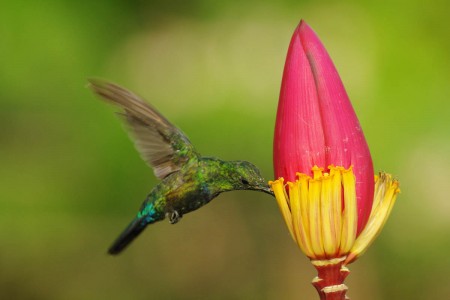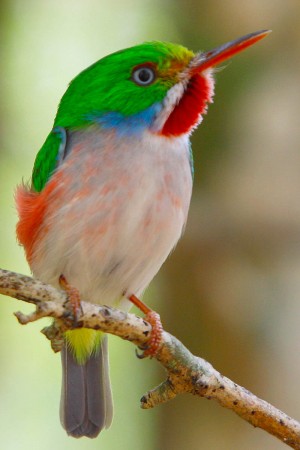
“Who pays the birds?” is the theme for the 2014 Caribbean Endemic Bird Festival (CEBF). At dozens of events throughout the region, participants will learn about the many beneficial services provided by birds, from pollination and pest control to leading fishermen to fish and attracting tourists. Although these services often go unnoticed and unappreciated, they are very important to both the ecology and economic prosperity of the Caribbean.
The festival, now in its 13th year, is led by BirdsCaribbean, the largest organization devoted to wildlife conservation in the Caribbean. The month-long festival includes Caribbean-wide activities beginning today – Earth Day (April 22), through to International Biodiversity Day (May 22), in more than twenty countries. The event celebrates the 150 bird species that are found only in the Caribbean, known as endemics. The highly successful program attracts over 80,000 participants and volunteers each year.
“Birds have always been an enjoyable part of Caribbean life, but few people understand the work they do behind the scenes,” explained Leo Douglas, President of BirdsCaribbean. BirdsCaribbean recently identified ten ways in which birds help both man and nature in the Caribbean. Pollinating flowers and dispersing seeds are valuable to natural ecosystems, while controlling insect pests and enriching soils can be highly beneficial to agriculture. Their role as garbage collectors—consuming animal carcasses and other waste—helps keep islands beautiful, but also benefits public health by disposing of materials that could cause pollution or spread disease.

In a region where economies are closely tied to the tourism industry, birdwatching tourism is increasingly important. “The birding market is much bigger than most people realize, and many people will travel to the Caribbean to see endemic species that they literally cannot see anywhere else in the world,” commented Lisa Sorenson, who is leading BirdsCaribbean’s regional bird tourism project called the Caribbean Birding Trail. The United States Fish & Wildlife Service found that birding and wildlife watching are worth US$32 billion per year in the United States alone, much of that spent on travel. “By helping islands cater to visitors interested in natural history, we hope to create job opportunities and encourage sustainable use of natural areas, protecting what remains of irreplaceable habitats.”
The goal of the month-long Festival over its 13-year history has always been to increase public awareness of the region’s exceptionally rich and threatened bird life, using the Caribbean’s celebrated endemic birds as flagships of conservation. Festival activities include a diverse array of public events including bird-watching excursions, lectures, seminars, photographic exhibitions, school-based art and costume competitions, church services, media campaigns, and theatrical productions all in recognition of the region’s rich bird life, natural heritage, and interconnectedness of regional habitats to global events. After a humble beginning, the Festival has grown to consistently include in excess of 80,000 participants in recent years. The Festival has been described as an unprecedented initiative of regional unification for heightening environmental education and awareness by leading international conservation organizations.
To view reports and photos of past Caribbean Endemic Bird Festivals, for downloadable Festival resources, and for updates on ongoing and planned activities in your area, click here.
